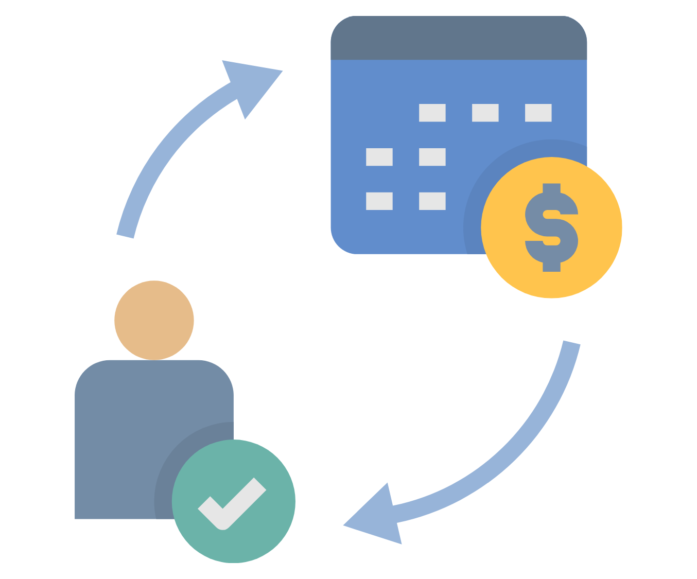
How to make WordPress more creator-friendly
The creator economy — individuals striking out on their own outside legacy companies — has exploded across all media in recent years, and editorial publishing is no different.
Editorial creators often start off using SaaS platforms, such as Substack and beehiiv to publish newsletters, or open-source software like Ghost to share blog posts, because these can often be the easiest entry points in the publishing space.
These creator platforms are an affordable and easy way to start earning from content. However, there comes a point when platforms’ one-size-fits-all approach can stifle growth and limit the ability of successful bloggers and publications to diversify revenue.
While not traditionally associated with the buzz of the creator economy, WordPress can in fact be a great tool for creators in the publishing space to take their business to the next level.
This article will discuss the challenges and trade-offs of common creator platforms, and share how WordPress can be adapted to address creators’ needs.
Here’s what we’ll cover:
Editorial creators: What do they need?
What do creator platforms offer?
How to make WordPress more creator-friendly
Final thoughts: Why use WordPress as a creator
These ideas are based on a presentation I delivered at WordCamp US in 2022 .
Editorial creators: What do they need?
When it comes down to it, there are typically only a few things creators in the publishing space need from their technology. They need tech that allows them to:
- Publish written, audio, video, and visual content
- Run advertising for sponsors / commercial partners
- Sell digital products such as ebooks and courses
- Sell and manage subscriptions
- Build and support communities (through comments and forums)
- Reach a wider audience with search engine optimisation (SEO) and social media
What do creator platforms offer?
Creator platforms such as Substack can be a great choice if you want to publish quickly and save on the infrastructure, security, and maintenance costs of a fully owned-and-operated tech stack.
Creator platforms can be user-friendly since they are often only designed for a specific workflow (in Substack’s case, sending newsletters). Often all you need to do is sign up for an account to begin creating content and start earning with the platforms’ low or no cost revenue sharing model.
In contrast, setting up a standalone WordPress stack with these features can require much more work. For a fully owned-and-operated WordPress build, you might need to take care of:
- Signing up and configuring domains and web hosting services
- Buying or building a WordPress theme — and plugins — and configuring it to your needs
- Researching, installing, and configuring membership and billing solutions
- Integrating newsletter or other distribution services you may want to offer
And the list goes on.
Once your website is up, you must also deal with regular maintenance, backups, and updates.
So, why would you go with WordPress?
Why should creators use WordPress?
WordPress supports more functionality compared to the often-inflexible creator platforms. You can start with the basics and grow along the way. Put simply, more effort and investment at the start can pay off down the track.
Here are some advantages of WordPress in the creator space:
- Flexibility and customisation: WordPress simply gives you more freedom. There are thousands of plugins built for any type of publishing functionality you might want. This means you never have to worry about compatibility with your base CMS. It’s the freedom to have your tech meet your specific business needs and the customisation to stand out in a crowded market.
- Ownership and control: Using software like WordPress means you can own your stack and your data and control how they are used in the future. There are too many cautionary tales of publishers building their businesses on a third-party platform and hitting problems when those platforms pivot. You don’t want to build on rented land!
- Scalability: WordPress works for websites of all sizes, from personal blogs to multinational billion-dollar publishers. You can start small and grow into an enterprise-sized business without spiralling costs.
Conversely, SaaS platforms often have diminishing returns as you grow. Once you reach a certain threshold, the cost of the limitations of a SaaS product can start to greatly outweigh the benefits.
ALT: Lifecycle of SaaS platforms (Taken from Ben May’s WCUS 2022 presentation)
How to make WordPress more creator-friendly
The key to making WordPress more creator-friendly is making it feel more like a platform. The idea of a “WordPress Lite” has been floating around for a while. The question is how do you build a really tight distribution of WordPress that makes it as simple as possible to start publishing and earning?
Leverage WordPress’ no-code functionality
A key to the success of creator platforms is they are built for non-technical operators, meaning you don’t have to know how to code to customise your product. It’s a direction WordPress has also been moving in for years — with the addition of drag-and-drop Gutenberg blocks, Full Site Editing (FSE), and page builders like Beaver Builder.
Allowing creators to do more in the browser without relying on an engineer helps address one of the appeals of the more inflexible creator platforms.
Clean up the WordPress admin
The default WordPress admin menu is overwhelming at the best of times, and the visual hierarchy is anything but user-friendly. The features you need there when setting up the website are rarely the same as in the day-to-day running of it.
A good rule of thumb when optimising a build for a creator is to strip back the admin post-launch to only items editorial teams need, such as Posts and Comments. Pushing everything else out of the screen can clean it up, make it feel less clunky, and be less intimidating for creators used to more streamlined dashboards.
Make WordPress plugins feel more native
Making plugins feel more native can help your WordPress setup feel more like a unified platform. There are not many easy ways to do this, but we’ve built plugin solutions that make for a more seamless user experience.
While WordPress has a fairly consistent design pattern around its core features — like its admin or block editor — commonly used plugins such as Yoast and Newsletter Glue use their own design, icons, and tabs. It can feel like you have three or four different programs running in the same place.
Rather than trying to fiddle with the styling or aesthetic qualities, one way to streamline the process is to create hooks between plugins to avoid the duplication of steps.
For example, we built a plugin integration that handled all of the different site functionality around paid subscriptions — paid web content and paid newsletters. The result was a seamless process where an editor didn’t have to mark content as paid across several different plugins.
Leverage SaaS integrations for payments
When processing payments on a WordPress website, for anything from subscriptions to products, you have a choice between handling that natively in WordPress — with WooCommerce — or with a SaaS integration such as Memberful, Chargify or Piano.
In the interest of having a tech stack built for non-technical practitioners, we recommend moving as much complex functionality out of WordPress as possible. Especially when it’s as mission-critical to the business as payments, we err on going with SaaS integrations.
In exchange for the SaaS fees, usually a revenue share, they handle important functions such as security, PCI compliance, and reporting and analytics. When you’re publishing at scale, outsourcing as much of that as possible is an effective way to de-risk your stack.
Final thoughts: Why use WordPress as a creator
WordPress is far from perfect when it comes to being a creator tool. There’s a reason creator platforms such as Substack, Ghost and beehiiv have focussed on simplicity over flexibility. Often that’s all creators want.
But if you want to build an owned-and-operated tech stack where you have full control, you can’t find a better base than WordPress.
What’s been the foundation for institutional publications can still be moulded to satisfy the needs of creators if you’re conscious of how it’s implemented. It does take some upfront investment of budget and time.

